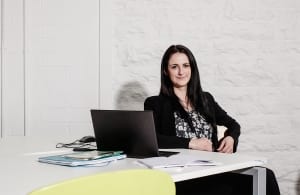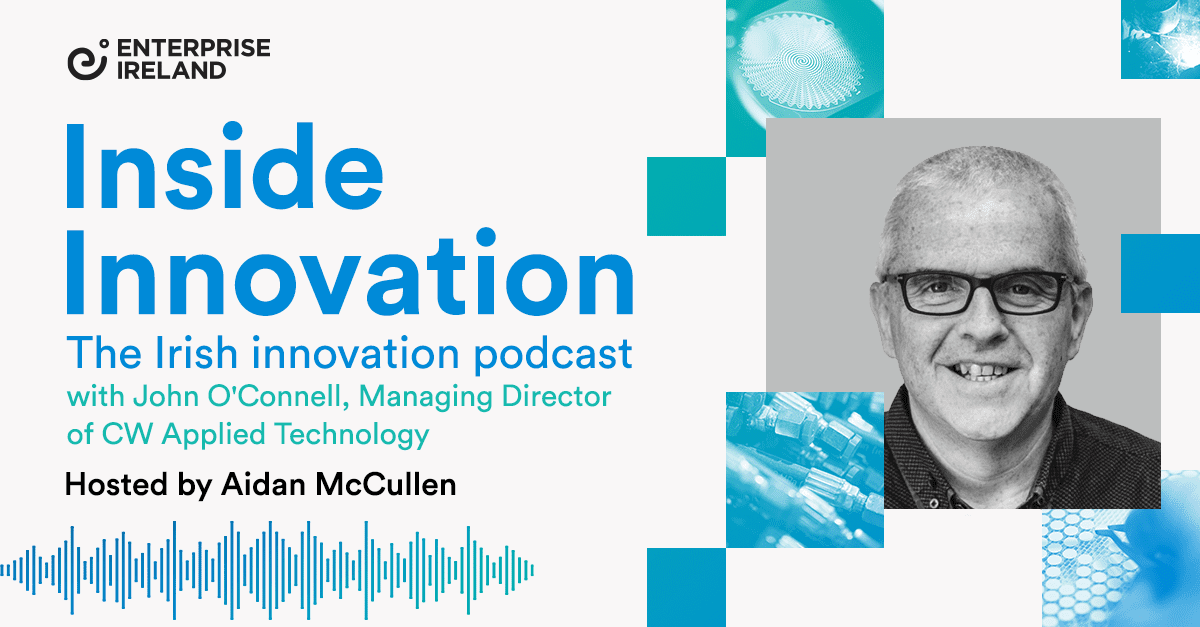Agile Innovation Fund: Easier than ever for companies of all sizes to access R&D funding
It is now easier than ever for Irish companies to access R&D funding to improve their products and services and compete internationally.
That was the message from Enterprise Ireland and the national network of Local Enterprise Offices to representatives from more than 60 companies who attended a research, development and innovation event recently in Dublin.
Enterprise Ireland and the LEOs pledged to use the Agile Innovation Fund to support companies of all sizes as they to seek to open new export markets and grow – promising a fast, flexible and simple application process.
Find more information about the Agile Innovation Fund here.
Speaking at the Agile Innovation Workshop, Eoghan Hanrahan, Enterprise Ireland Regional Director for the Dublin Region and Regional Development, said: “In doing R&D, companies have to challenge the norms, do something different, look at achieving some kind of technical innovation to try and future-proof their company.
Get support for Agile Innovation
“We recognise that R&D can be challenging but it is a very important step for any business to take and it’s also important that they are supported in doing so. Enterprise Ireland and the LEOs are here to assist people and companies who want to invest in R&D. The Agile Innovation Fund offers up to 50% funding to a maximum of €150,000 in grant aid.”
Irish companies are spending less on R&D than most European competitors. Latest Eurostat figures show that spending in 2017 equated to 1.05% of GDP, almost half the EU average of 2.07% and well behind R&D leaders Sweden, Austria, Denmark and Germany – all of whom spent more than 3% of GDP.
Of the €3bn that was invested in R&D in Ireland, €1bn was spent by indigenous companies. It is notable that in 2007, Ireland spent a higher percentage of GDP (1.23%) on R&D than it did in 2017.
Joe Madden, Manager of In-Company R&D Supports at Enterprise Ireland, told the workshop that the Agile Innovation Fund was designed to counter the belief among SMEs that funding R&D is too costly and that securing state support for projects is too complex and geared towards larger operations.
Flexible and fast access to Agile Innovation funding
“The Agile innovation fund was introduced at the beginning of 2018 as a response to a very steep fall off in applications for R&D support,” Mr Madden said. “Companies were telling us that the standard R&D application process was too complicated and very often they would have a project finished before they even knew whether they were going to get approval to do it.
“We needed to introduce something much more flexible, much faster and where the funding wasn’t as high so that we could apply a less onerous process for evaluating and approving applications.”
The main feature of the Agile Innovation Fund is its fast turnaround time, with an application process that results in decisions in a few weeks rather than several months. More than 90 companies have drawn down around €20m in funding since it was launched last year, with 90% of them rating the application process as relatively simple in a survey.
Madden added: “There are only two documents required to apply for the Agile Innovation Fund, an online application form and a project plan. The project plan is what the technical assessment of the application is based on. The technical assessors are looking for two things: is this eligible R&D and are the costs reasonable. To be eligible R&D, there has to be technical uncertainty – this means the project must demonstrate some kind of product or process development technical challenge.
“Total expenditure on any single application is limited to €300,000, so if your project spend goes to €300,001, it is not eligible for funding. Typically for a smaller company, the funding would be 45% of the total cost, which equates to a maximum grant of €135,000. If a small company collaborates with a partner, this funding can rise to 50% and therefore the limit increases to €150,000.”
The goal of the Agile Innovation Fund is to increase the amount of spending by indigenous companies of all sizes on R&D across the economy.
Local Enterprise Office support
Oisin Geoghegan, Head of Enterprise at LEO Fingal, advised companies that are not Enterprise Ireland clients to get in touch with their Local Enterprise Office.
He said: “Providing assistance and funding for R&D projects or innovation is one of the core reasons why the Local Enterprise Offices are here. R&D is not just about wearing white coats and having a lab. Most of the businesses we are dealing with could potentially apply for and receive R&D grants
“We want to see more applications from SMEs and the LEOs will work with you to give you advice and guidance on the application process. It’s called Agile for a reason, the application process is straightforward, it’s online and we want to see applications processed and approved quickly.”




 For Irish businesses looking at these markets, either as part of their supply chain or as end markets, it’s worth keeping an eye on regulatory initiatives in relation to either, he said.
For Irish businesses looking at these markets, either as part of their supply chain or as end markets, it’s worth keeping an eye on regulatory initiatives in relation to either, he said.


 “I found myself spending far too much time on trying to manage these dressings. The straw that really broke the camel’s back was when I attended a friend’s hen party and was talking to the groom’s mother. I was shaking her hand and a dressing just fell out of my dress. I always had this idea to develop some sort of solution and that just spurred me on to really find something that worked for HS patients.”
“I found myself spending far too much time on trying to manage these dressings. The straw that really broke the camel’s back was when I attended a friend’s hen party and was talking to the groom’s mother. I was shaking her hand and a dressing just fell out of my dress. I always had this idea to develop some sort of solution and that just spurred me on to really find something that worked for HS patients.”










